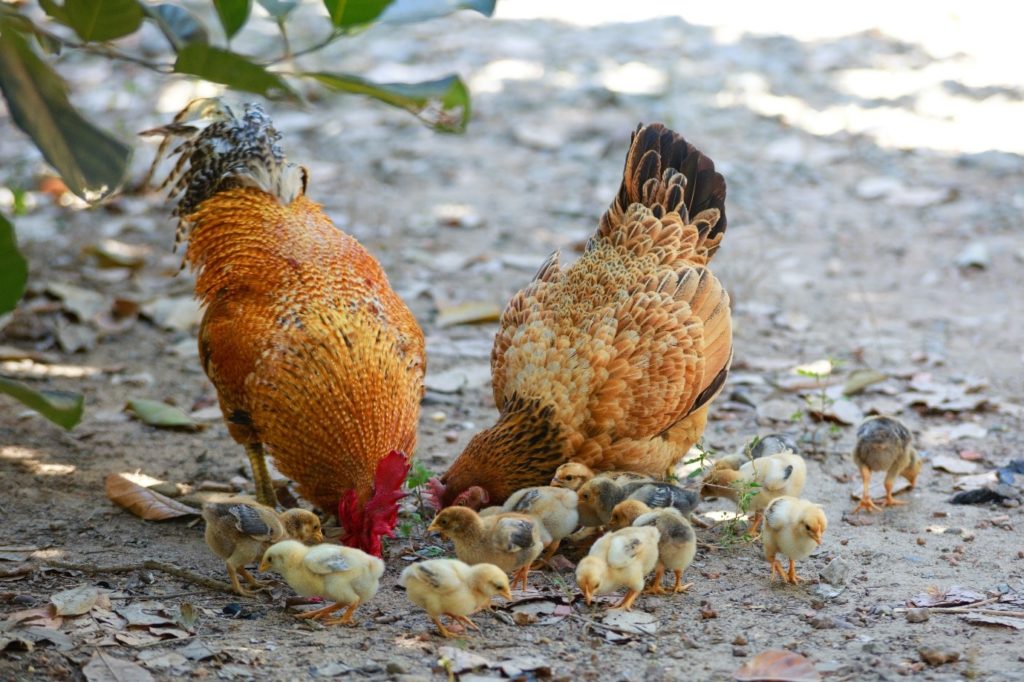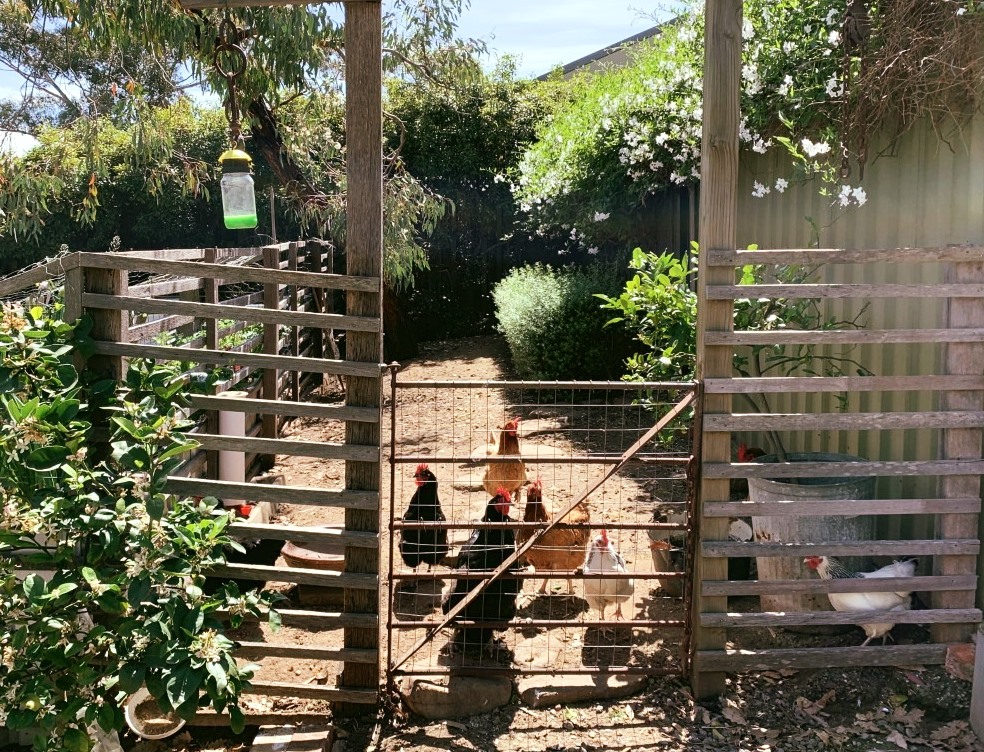Keeping poultry is an enjoyable and rewarding activity for many people, but as the weather warms up, the henhouse can become a magnet for flies. Why are flies attracted to our poultry sheds, why does it matter, and what can we do about it if we prefer not to use insecticides?

Why are flies attracted to poultry?
Flies are attracted to poultry sheds for two main reasons. Firstly, for many species of fly, the young adult female needs to find the building blocks of protein needed to mature their eggs, and poultry manure offers good source of those materials. Secondly, the manure itself is an ideal place to lay eggs as it is a great food source for the hatching fly larvae.
In cool, temperate areas of the country, fly reproduction is slowed or even ceases over winter. In cold conditions, adult flies become inactive, but may persist in sheltered crevices of chicken coops for several months, coming out occasionally on a sunny day to forage briefly before hiding away again. The adult lifespan can stretch out into months during winter. At the same time, larvae that fed in manure beds in autumn will have buried their way down into the soil, away from any extremes of cold, and will subsist there until temperatures begin to rise again.
In early spring, flies emerge from their puparia in the ground and start life as immature adults. At this stage, females are driven to forage for the resources needed in their diet to provision their eggs with nutritious yolk. Males may also be attracted to accumulations of manure, which become a great place to find a mate. Once they have found enough protein, the gravid females, which have now developed a batch of mature eggs, focus on finding a place to deposit their eggs. They can be quite selective about where to lay – it needs to be moist, but not too wet, and not too dry (Fatchurochim, Axtell, & Geden, 1989); it needs to be comfortably warm, not to hot or too cold (Fletcher, Axtell, & Stinner, 1990); and it needs to have the perfect mix of micro-organisms within it for the young larvae to feast upon. What better than a henhouse poultry manure heap, where it is sheltered from extremes of heat and rain and a little bit of extra moisture and nourishment is added to the pile every night!

Why are flies a problem?
Flies are known to carry and spread a wide range of diseases (Wales, et al., 2010). They can spread disease among your flock, between flocks and also from the flock to humans. For example, Salmonella, which causes gastroenteritis, can be left on eggs in faecal spots deposited by flies, and the risk is then that these micro-organisms are transferred into human foods. In addition, the flies themselves may reproduce in the henhouse, but over time they will spread out to surrounding areas, potentially causing a nuisance around houses (James, Critchley, & Glatz, 2004).
How can we manage flies organically?
By using environmental hygiene and trapping in an integrated pest management approach, you can manage fly populations in your backyard flock without insecticides. Regularly inspect your henhouse and maintain it in a hygienic state. Several times per year, clean out the manure that accumulates under roosting perches and replace it with fresh dry bedding. Manure piles are where the fly larvae feed and develop into new flies. By regularly replacing these piles with dry bedding, you can reduce the moisture levels in the bed, making it less suitable for fly development. Similarly, check that your water supply does not drip and make a patch of permanently moist soil suitable for flies and larval development. Fly traps are also a critical part of the organic approach.

EnviroSafe fly traps use a bait that is made from food-grade ingredients and is totally non-toxic. They safely remove excess adult flies from the local environment without chemical insecticides.
One or two traps hung near the hen house and yards, and re-baited regularly throughout the spring and summer will be enough to keep a lid on fly numbers and reduce the chances of them reaching pest proportions.
Bibliography
Fatchurochim, S., Axtell, R. C., & Geden, C. J. (1989). Filth fly (Diptera) oviposition and larval development in poultry manure of various moisture levels. Journal of Entomological Science, 24(2), 224-231.
Fletcher, M. G., Axtell, R. C., & Stinner, R. E. (1990). Longevity and fecundity of Musca domestica (Diptera: Muscidae) as a function of temperature. Journal of Medical Entomology, 27(5), 922-926.
James, P., Critchley, K., & Glatz, P. (2004). Reducing disease spread and neighbour complaints by integrated fly control on egg farms. North Sydney: Australian Egg Corporation Limited.
Wales, A. D., Carrique-Mas, J. J., Rankin, M., Bell, B., Thind, B. B., & Davies, R. H. (2010). Review of the carriage of zoonotic bacteria by arthropods, with special reference to Salmonella in mites, flies and litter beetles. Zoonoses and Public Health, 57(5), 299-314.

